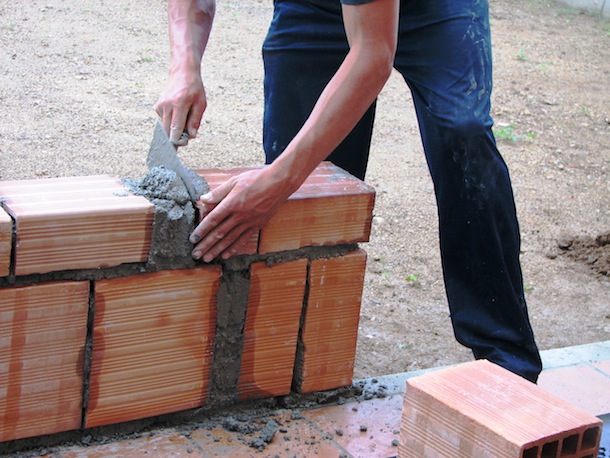Take an objective view of home building, compare it to other industries, and you’ll find remarkable differences. Some differences spell opportunity, such as relatively low barriers to entry. Compare home building’s barriers to those of farming, where buying just a small spread of 50 acres and some decent equipment is cost-prohibitive for most. Other differences make the business fun, such as the ability to actually build and sell a high-dollar product of your own design. Try that with cars or any manufactured product, even one as simple as a hair dryer. Many of home building’s differences, however, inject extreme variability in both process and product leading to what often appears to be barely controlled chaos. After 25 years in the business and getting to know a couple of hundred builders in five countries, it is clear that builders who learn to control that chaos find the greatest success.
Home builders, of course, rarely build anything. Instead they finance, identify resources, design, contract, coordinate, schedule, sell, and service homes—but they do not physically build them. More than 95 percent of the people who work for builders do not labor for them as employees and, more than that, they often work for competitors. On any given house, a builder will engage a minimum of 500 people from 35 companies, and that can grow to over a thousand people from 50 or more firms. During construction, the work is done outside in sun, wind, rain, and snow with virtually none of the common comforts found in a traditional manufacturing environment. Add to this scenario a
bevy of codes and their often inconsistent interpretation by inspectors. Finally, in no other business do you find customers so directly connected to the product during production, and we all know the chaos they can produce—if you let them.
Dr. W. Edwards Deming was known for many profound observations about manufacturing processes and management, but none is more simple yet poignant than this: “Uncontrolled variation is the enemy of quality.” Neither Deming nor anyone else would suggest for a moment that you cannot have variation in plans and product; but to the degree you fail to control it and provide coping mechanisms for what you cannot control, then quality,
customer satisfaction, and profit all suffer. There are many, many targets in home building where we can reduce the variation that
leads to complexity and to chaos. Use this list of 10 opportunity targets to start your own, and I encourage you to share any others you devise that reduce chaos in your own organization.
1. Reduce employee turnover
Most of what we read about
employee turnover emphasizes the cost of replacement, often cited as three-to-four times the annual income of any trained, experienced person you lose. That includes the cost for recruiting, retraining, and getting someone up to speed. But replacement costs are not the biggest problem. The real issue is losing the rhythm of production, called “Takt” time in classic Lean. With turnover in your staff, you lose a smooth-running organization, which results in continual static in the system,
inefficiency, and induced variation as you start, stop, restart, over and over the myriad small processes that make up the larger system. The analogy of not firing on all cylinders is apt, and a larger burden then falls to those who are firing, to keep the machine going. Everyone is stressed and chaos increases.
2. Reduce the absolute number of suppliers and trades
Each supplier and trade beyond the absolute minimum required places additional burden on the system in administration, bookkeeping, data entry, and data processing, just for starters. Simply keeping up with phone numbers, addresses, Federal Tax ID numbers, W-9s, and checks is a nightmare. Construction and purchasing must learn the strengths, weaknesses, and idiosyncrasies of too many companies. Which is most timely? Which has the best crews, and what are their names? How about the crews you never want to see on your site again? As described in the introduction, you already utilize a minimum of 35 companies and 500 people to build your houses. Are you sure you want to add another ring to that circus?

3. Reduce turnover in suppliers and trades
Now that you have minimized the absolute number of suppliers you need, reduce the turnover in those you have. This task is even harder than reducing turnover among your own employees because you have less control. With your own people you can supervise, train them directly, and try to insulate the rest of the company until they get up to speed. You can institute internal workarounds on an interim basis or throw more bodies at it for a time. With suppliers and trades, that is much more difficult. On the surface you see the schedule slowing down, production loss, and a lot of chatter in the system. Look closer and you observe extra trips to the sites, ballooning cell phone minutes, quality measures suffering, customer satisfaction slippage, and your field people working late and coming in on weekends to keep up.
4. Simplification in plans, elevations, and options
The subject of simplification in opportunities No. 4 and No. 5 deserve their own article, or perhaps a book. Whether you build starter homes or multi-million-dollar mansions does not matter. Each day you should wake up with
a goal to simplify something—anything—about the product or process. Do you really want to festoon that elevation with 32 corbels at $35 each? Is it a good idea to load your model with designer options, especially those that customers cannot afford? Do you need an entire book of handrail choices for mid-priced homes as did one builder I visited last year? Do customers want 27 front-door choices on a townhome as I saw with another builder?
Why do you have so many VPOs, and why do you need three levels of sign-off to approve them? How many elevations do you need to sell that plan, and how many models are sufficient? Get in the habit of challenging everything you do inside the office, at the sales office, and especially in the design center. No notions or assumptions allowed.
5. Simplification in construction
In No. 4, we are talking primarily about how chaos impacts everything off the building site. Here we confront the impact on daily
field operations. Never forget that variation increases the complexity in a system exponentially, not arithmetically. Double the plans and you increase complexity at the square, or four times. The same goes for elevations, options, communities, suppliers, and trades. Complexity breeds chaos. Can your field managers really get in each house, each day? We could list examples all day long, but more instructive here is to ask you to stop and
consider the impact on daily field operations by this complexity, especially the schedule.

6. Fully detailed, lean-engineered plans
I have published multiple articles on this one, and it is a constant topic of mine and my colleague Todd Hallett from
TK Design & Associates. I have walked more than 500 housing sites the past seven-plus years doing lean implementation and collected literally thousands of pictures of the very expensive consequences of not having great plans. In the LeanPlan Workout process we run that involves 20 or more suppliers and trades, it is common to identify more than 100 specific improvements to a plan that the builder thought was
thoroughly vetted for waste. We never see less than 50. The notion that builders won’t pay for detailed plans and working drawings because they are unnecessary or too expensive is beyond penny-wise and pound-foolish. There is no greater source of home building chaos than inadequate plans.
7. Implement unit costing
If you want to bring sanity to bidding and options, determine the cost of everything up front.
Get agreement from suppliers and trades for the next year and offer only options and selections with established cost, or a price so simple to figure that anyone can do it without phone calls, drawings, and approvals. Yes, getting unit costing started is a ton of work. Yet the induced variation from not having plans, elevations, options, and selections determined, and costed and priced in the
design center, leads not simply to chaos but to something nearer to brain damage. Your only other option is a completely set, very simple product with extremely limited options. There is a niche for that product, but a small one. Meanwhile, the rest of you have work to do.
8. Reduce cycle times
The typical U.S. builder requires 150 to 180 days to complete a house, despite what the paper schedule says. A reasonably good builder might consistently average 120 days. Really strong builders hit the 90-day mark with consistency while the truly great ones get it done in 60. For the 95 percent of you over the 90-day build time mark, there is nothing that will do more to improve your company and enhance profit because to
be excellent at scheduling, you have to be great at so many other aspects of the business.
If you need proof, email me with the words “Saved Day Calculator” for an Excel template that calculates schedule impact in a way that is inarguable. Yet that calculation—usually three-to-five times in dollars more than builders believe it is—does not account for the additional cost associated with variation. The problem is work-in-progress units stacking up on top of each other. You want to build 120 houses this year? Lay those houses out for a year on your 120-, 150-, or 180-day real schedule and see how the units stack up to get them in. Now run it at 90 days. Now 60 days. See the stacks go away? Which do you think is easier to manage? Which will produce better quality? Remember that chaos increases exponentially with complexity and variation. Would not the reverse be true? Ponder the implications and by tomorrow you will be working on cycle times at full bore.
9. Optimize units per supervisor
How many units can the average experienced site supervisor manage in a year? Did you immediately ask, “What’s the cycle time?” Without knowledge of cycle time it’s an impossible question. There are innumerable variables such as the number of communities, if there are assistant superintendents, is there front-end/back-end separation, do they pull their own permits, do they perform customer walks and schedule warranty? There is no simple formula for this except to
consider your building process, take all variables into account, modify as needed for experience and housing type, then manage to it. Don’t just let it happen, or let the number wander, as we often see. The moment a site supervisor tries to manage beyond his capacity, errors and oversights creep in, complexity starts to compound, and chaos rears its head again. Figure it out and hold the line. Get your field staff ready before you need them. If you know
how to measure total cost, you know you can’t afford not to do this.

10. Master schedule coordination
I am generally a states-rights guy except when it comes to basic expectations everyone should be able to count on no matter where they live or work. Given that, a dose of federalism and central control can avoid a lot of chaos in scheduling. With business up nearly everywhere, we frequently hear suppliers and trades complain that site managers from the same company give them mutually exclusive instructions and put them in an impossible situation. Once you have more than a few site managers, you need some mechanism to
coordinate supplier and trade resources for optimum production. Without it your neat, orderly NASCAR track becomes an old-fashioned, county fair figure-eight. Next stop, demolition derby.
I have hardly exhausted this list and cut if off at 10 for space considerations. Most of these are simply examples I have encountered in the past few months. Pull your crew together, go over this list, then start brainstorming everything that induces variation and complexity in your process. Hold off until the end the debate on whether it is necessary variation or not. Then have it out. Identify a list of five top culprits that have the biggest negative impact and make a plan to eliminate or reduce the complexity as much as possible.
Last month I participated in
Fletcher Groves’ first-ever “Velocity” workshop, spending two days exploring the ins and outs of production, inventory, and scheduling. It was quite intense, challenging, and not for the intellectually lazy. We played repeated rounds of a building simulation game and the students saw clearly that scheduling requires careful thought and planning, otherwise things quickly spin out of control, and chaos ensues. Henry Adams, son of one U.S. president and grandson of another, wrote in the 1800s: “Chaos was the law of nature; Order was the dream of man.”
You may be tempted to say nothing has changed—leaving the goal of
bringing order to home building a mere dream—and use this as a convenient excuse not to try. Yet the math of complexity and chaos is beyond compelling and, without corralling it, your street of dreams becomes a dead end. So go ahead, dream the impossible dream. When it wakes you up at night from excitement or futility, email me and let me know how it’s going.











